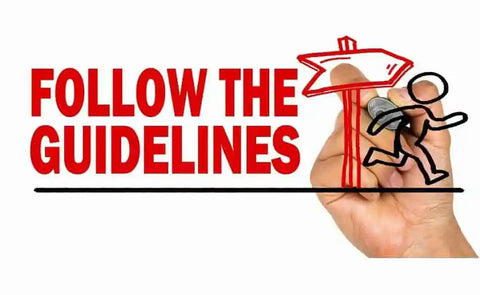多年來,我們為出版、演示、考試和評分對學術和科學寫作進行校對,這使得 Proof-Reading-Service.com 積累了大量關於如何製作成功的學術文獻的知識和經驗。我們始終透過部落格文章與我們的客戶和其他網站訪客分享我們的專業知識,這些文章提供針對高級研究人員設計的十三個不同類別的建議和討論。
這是我們最大的類別,包含五百多個獨立的帖子,涉及準備、提交和修改在傳統和開放獲取期刊上發表的學術和科學文章的各個方面。大量帖子提供了撰寫成功研究論文的建議,其中一些帖子側重於特定學科或主題領域的寫作,還有一些帖子討論學術期刊發表的其他類型的文章(例如評論和報告)。許多文件詳細討論了期刊文章特定部分的準備工作:標題、摘要、關鍵字、總結、重點、內部標題、介紹、文獻綜述、方法、發現、討論、結論、清單、表格、圖表、引文、註釋、參考文獻、附錄、致謝和補充資料。選擇正確的同行評審期刊和根據其指南和受眾定制論文的問題被多次討論,並且討論了道德問題,重點是識別和避免剽竊和欺詐等行為以及掠奪性出版商提供的誘惑。克服拖延症和寫作障礙是一些貼文的主題,還有許多其他貼文為作者提供建議,讓他們回應編輯和審稿人的修改請求,並應對各種出版商的拒絕。創作出色的學術和科學文章、做出智力貢獻並產生影響是這些文章的主題,讀者可以找到有用的提交前清單和各種寫作樣本。
與考慮發表您的研究論文的期刊編輯進行成功的溝通是發表學術或科學文章的重要部分,但這往往是一項具有挑戰性的任務,尤其是當事情變得複雜時。這組貼文提供了學者或科學家可能需要寫給同行評審期刊編輯的各種信件的建議。本文討論了提交前的詢問信、隨稿提交的附函、對批評意見和修改要求的回應、推翻拒絕的談判以及重新提交的解釋信。書中解釋了這些信件中應該包含和不應該包含的內容,並提供了範本和範例,甚至還提供瞭如何充分利用這些寫作樣本的說明。
對於此類別,我們收集了一些部落格文章,專門介紹如何撰寫求職信來介紹提交給期刊發表的學術或科學論文。強調清晰的溝通和完美的散文的必要性,不僅建議讀者在給編輯的求職信中應包含哪些內容,還警告讀者必須避免的常見錯誤。求職信範本及其使用方法的詳細說明特別有用,並鼓勵作者在必要時以非常規的方式提供求職信。
這些部落格文章重點關注如何應對學術或科學作者可能從期刊編輯那裡收到的最糟糕的信件——拒絕信。討論了拒絕稿件的各種原因,例如語言、格式和內容問題,並概述了處理每種情況的建設性方法。我們鼓勵專業的回應和有益的修改,並強調在解決實際問題以改進論文的同時保持研究完整性的重要性。值得信賴的同事和專業的校對員在處理拒絕時可以提供最大的幫助,正如其中一些帖子所明確指出的那樣,並且還介紹了分享研究的替代方法。
同儕審查對於學術和科學出版至關重要,期刊校對員也廣泛使用它們,但對於作者來說,通過極其嚴格的同行評審並獲得出版可能是一個相當艱苦的過程,特別是當評審是對抗性的或不恰當的時候。這些文章介紹了同行評審員的作用以及學術期刊使用的不同類型的同行評審,並建議作者如何以富有成效的方式回應評審員的評論,並通過詳細的示例信增強了這一建議。這些貼文還包含有關如何成為優秀的同儕審查員以及如何為期刊校對員和作者完成真正有用的評審報告的說明。
雖然這個大類別對於任何希望完善其正式寫作的學者來說都是有用的,但對於那些不是以英語為母語但用英語撰寫學術和科學文獻的作者來說尤其有用。定義和討論了語法一致性和平行性,並解釋了動詞、名詞、代名詞、副詞、形容詞、分詞、所有格、介詞、連接詞和冠詞等詞類的正確用法。許多貼文都涉及標點符號的問題,包括句號、逗號、分號、冒號、撇號、連字符、破折號和括號,闡明瞭如何以及何時使用每種標點符號,並強調了預期的含義和一致性。句子結構也是一個主要主題,因此概述了基本的句子模式,並鼓勵作者透過避免片段、融合和拼接來完善句子結構。也建議以良好的開頭寫出句子,用有效的過渡詞邏輯地展開句子,並改變句子的結構以產生引人入勝且精緻的散文。
文內引用、參考文獻清單以及某些情況下的參考書目對於學術和科學寫作至關重要,但要做到完美卻非常棘手。這些帖子討論了以括號、數字和註釋形式引用來源的一般原則和實踐,並為所引用的來源提供了完整的書目參考。討論了各種不同的文件方法和風格的細節,例如 AMA、芝加哥、哈佛、APA、MLA 和溫哥華,並介紹了每種風格額外的有用資源。向作者詳細展示如何創建文內引用、直接引用權威文獻、提供適當的參考文獻以及編寫帶註釋的參考書目。也提醒他們,必須正確承認研究中使用的所有來源,以避免抄襲,並且始終需要仔細檢查參考文獻的準確性。本文解釋了引用卡特爾的不道德行為,並提供瞭如何透過出色的研究和寫作來獲得引用和知識影響力的建議。
縮寫通常是學術和科學寫作的特徵,但必須始終準確、一致地使用縮寫,以便向讀者清楚地傳達其含義。這一系列部落格文章可協助您標點縮寫、形成複數和所有格,並在縮寫前適當地使用冠詞。提供了有效縮寫參考文獻的詳細信息,並討論了一些常見的拉丁縮寫及其正確用法。
這組部落格文章是專門為正在撰寫論文和學位論文的研究生設計的。其他類別中涉及的許多主題(進行出色的研究、完善語法以便清晰地進行書面交流、添加準確的參考文獻、正確使用縮寫、仔細校對等等)也在這裡討論,但始終側重於撰寫論文或學位論文。此外,學生還將找到有關有效的批判性閱讀、徹底準確的筆記記錄以及會議和考試的認真準備的有用建議。概述了論文的預期結構及其各個部分,以幫助學生提前規劃,並強調與論文指導老師、導師和考官建立積極有效的工作關係的重要性。本文提供了保持持續進步、避免拖延和寫作障礙的技巧,以及將論文的最佳部分轉化為期刊文章的實用建議。
這幾篇部落格文章對於剛開始發表研究成果的學者和科學家特別有幫助。有些貼文提供了早期職業出版的技巧和場所,另一篇貼文則為讀者提供選擇合適的博士後職位的建議。討論了與職業發展相關的截止日期和引用,並仔細解釋和處理了與學術職位和晉升相關的 h 指數分數。
這一小部分帖子專門為專業校對人員撰寫,討論了成功進行學術和科學文獻屏幕校對所需的工作空間、工具和實踐。本文提供了有關接收、組織和備份文件的建議,其中一篇解釋如何像專業人士一樣進行校對的文章也可能引起正在校對自己或同事作品的學者的興趣。
此類別包含我們最受歡迎的五篇文章。其中兩份提供了寫作樣本,特別是回覆同儕審查員意見的範例信和一些寫給期刊校對員的求職信範本。另外兩篇是「如何寫作」的帖子,一篇提供撰寫期刊文章的技巧,另一篇解釋如何撰寫研究論文的發現部分。第五篇文章介紹了 h 指數分數並討論了其與學術地位的關係。
我們的十大部落格文章顯然包括上述五篇和另外五篇。其中一份提供了從出版商撤回手稿的範本信函。另一篇文章討論了論文或學位論文引言的最佳長度,還有一篇文章指導作者如何使用和如何不使用縮寫“ibid”。和‘id’。在學術參考文獻中。最後,有兩篇文章討論了標點符號:分號和冒號的區別,以及標題、標題和說明中句號的使用。
為什麼選擇我們的編輯和校對服務?
在 Proof-Reading-Service.com,我們透過龐大且極其敬業的學術和科學專業團隊提供最高品質的期刊文章編輯、論文校對和線上校對服務。我們所有的校對人員都是英語母語人士,擁有研究生學位,他們的專業領域涵蓋了廣泛的學科,因此我們能夠幫助我們的國際客戶進行研究編輯,以改進和完善各種學術手稿,從而成功出版。我們的稿件編輯和校對團隊中許多經過精心培訓的成員主要負責擬在學術期刊上發表的文章,運用嚴格的期刊編輯標準,確保每篇論文中使用的參考文獻和格式符合期刊對作者的指示,並糾正任何語法、拼寫、標點或簡單的打字錯誤。透過這種方式,我們使客戶能夠以清晰準確的方式報告他們的研究,以打動收購校對員並實現出版。
我們為各種科學期刊論文的作者提供的科學校對服務尤其受歡迎,但我們也提供手稿校對服務,並擁有校對和編輯所有學術學科以及其他學科手稿的經驗和專業知識。我們的團隊成員專門從事醫學校對服務,我們的一些專家專門致力於論文校對和手稿校對,透過最嚴格的博士論文編輯和期刊文章校對實踐,為學者提供提高格式和語言使用能力的機會。無論您是在準備會議論文以供展示,完善進度報告以供與同事分享,還是面臨編輯和完善任何類型學術文獻以供出版的艱鉅任務,我們專業團隊的合格成員都可以提供寶貴的幫助,讓您對您的書面作品更有信心。
如果您正在為學術或科學期刊準備一篇文章,或者計劃在不久的將來實現這一目標,那麼您可能會對一本新書《期刊出版指南》感興趣,該書可在我們的「期刊發表研究成果的技巧和建議」網站上找到。








